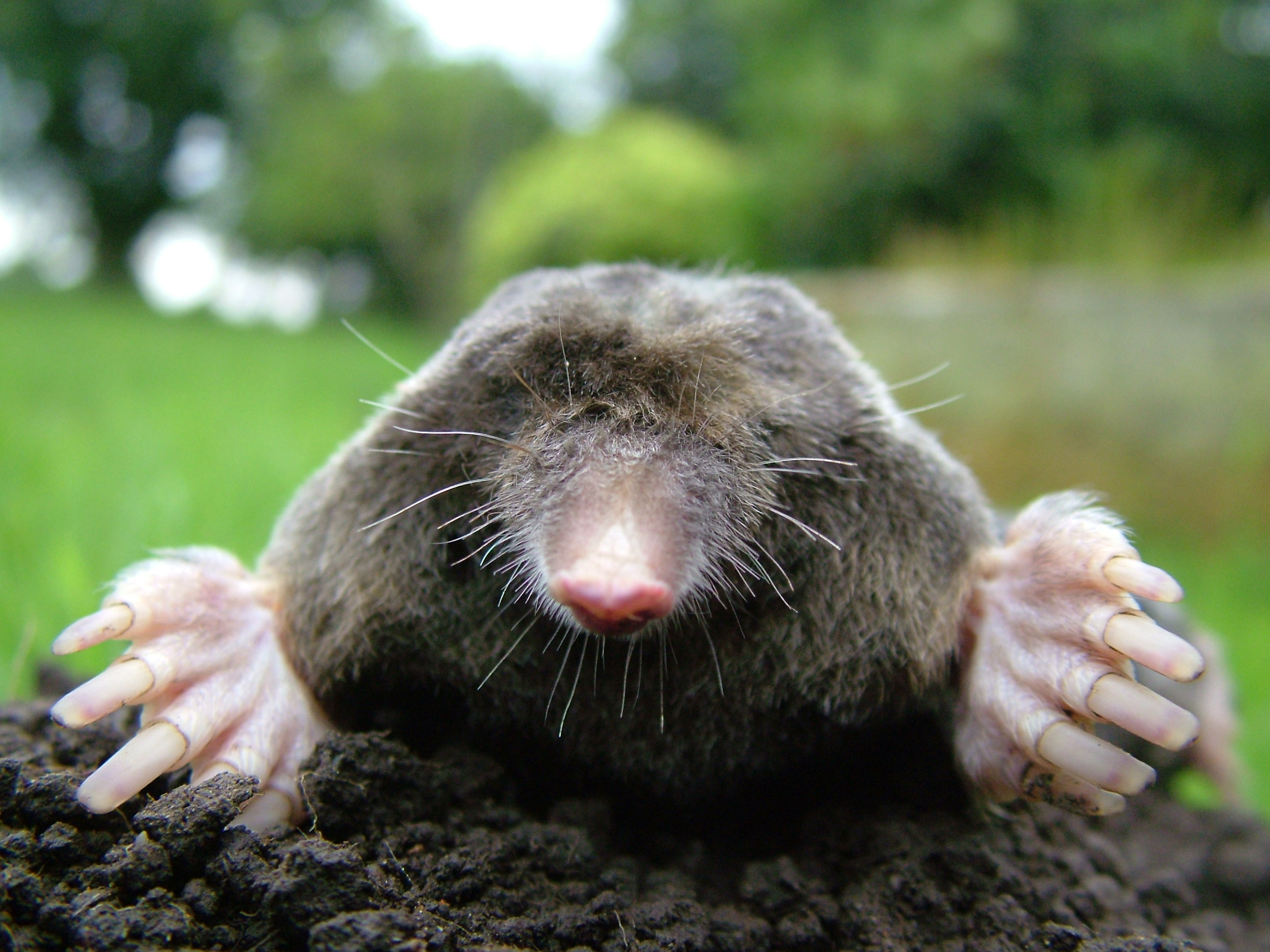- Talpidae
Taxobox
name = TalpidaeMSW3 Hutterer | pages = 300-311]
fossil_range = LateEocene to Recent

image_width = 240px
image_caption =European Mole
regnum =Animal ia
phylum = Chordata
classis =Mammal ia
ordo =Soricomorpha
familia = Talpidae
familia_authority = G. Fischer, 1814
subdivision_ranks = Genera
subdivision = 17 genera, see textThe family Talpidae includes the moles and the
desman s, small insectivorous mammals of the orderSoricomorpha . Moles are, to varying degrees, subterranean animals, whilst desmans are aquatic. Talpids are found across the northern hemisphere, inAsia ,Europe , andNorth America .The first talpids evolved from
shrew -like animals in the lateEocene of Europe. The most primitive living talpids are believed to be theshrew-mole s, with other species having evolved further towards either a subterranean or an aquatic lifestylecite book |author= Savage, RJG, & Long, MR|year=1986 |title= Mammal Evolution: an illustrated guide|publisher= Facts on File|location=New York|pages= 53|isbn= 0-8160-1194-X] .Characteristics
Talpids are small, dark-furred animals with cylindrical bodies and hairless, tubular, snouts. They range in size from the tiny shrew-moles, as small as 2.4 cm in length, and weighing under 12 grams, to the
Russian Desman , with a body length of 18-22 cm, and a weight of about 550 grams. Thefur varies between species; desmans have a waterproof undercoat and oilyguard hair s, while the subterranean moles have short, velvety fur lacking any guard hairs. The forelimbs of moles are highly adapted for digging, with powerful claws, and the hands turned permanently outwards to aid in shovelling dirt away from the front of the body. By contrast, desmans have webbed paws with a fringe of stiff fur to aid in swimming. Moles generally have shorttail s, but those of desmans are elongated and flattenedcite book |editor=Macdonald, D.|author= Gorman, Martyn|year=1984 |title= The Encyclopedia of Mammals|publisher= Facts on File|location=New York|pages= 766-769|isbn= 0-87196-871-1] .All species have small eyes and poor eyesight, but only a few are truly blind. Talpids rely primarily on their sense of touch, and have
vibrissa e on their faces, legs, and tails. The flexible snout is particularly sensitive. Desmans are able to close both their nostrils and ears while diving. Unusually, thepenis of talpids points backwards, and they have noscrotum .Talpids are generally insectivorous. Moles eat
earthworm s, insect larvae, and occasionally slugs, while desmans eat aquatic invertebrates such as shrimps, insect larvae, andsnail s. Talpids have relatively unspecialized teeth, with the dental formula: dentition2|2-3.1.3-4.3|1-3.0-1.3-4.3Habits
Desmans are primarily
nocturnal , but moles are active day and night, although usually travelling above ground only under cover of darkness. Most moles dig permanentburrow s, and subsist largely on prey that fall into them, but the shrew-moles, while still digging tunnels, forage for food on the forest floor. Desmans also dig burrows for shelter, foraging in rivers and lakes.Talpids appear to be generally solitary animals, and only a few species, such as the
Star-nosed Mole , build burrows shared by more than one individual. They are territorial animals, and will defend their home range against intruders.Classification
The family is divided into 3 subfamilies, 7 tribes, and 17 genera:
* SubfamilyScalopinae
** TribeCondylurini
*** Genus "Condylura ": Star-nosed Mole
** TribeScalopini
*** Genus "Parascalops ": Hairy-tailed Mole
*** Genus "Scalopus ": Eastern Mole
*** Genus "Scapanulus ": Gansu Mole
*** Genus "Scapanus "
* SubfamilyTalpinae
** TribeDesmanini : Desmans
*** Genus "Desmana ": Russian Desman
*** Genus "Galemys ": Pyrenean Desman
** TribeNeurotrichini
*** Genus "Neurotrichus ": American Shrew-mole
** TribeScaptonychini
*** Genus "Scaptonyx ": Long-tailed Mole
** TribeTalpini
*** Genus "Euroscaptor "
*** Genus "Mogera "
*** Genus "Parascaptor ": White-tailed Mole
*** Genus "Scaptochirus ": Short-faced Mole
*** Genus "Talpa"
** TribeUrotrichini : Japanese Shrew-moles
*** Genus "Dymecodon "
*** Genus "Urotrichus "
* SubfamilyUropsilinae : Shrew-like Moles
** Genus "Uropsilus "References
Wikimedia Foundation. 2010.
